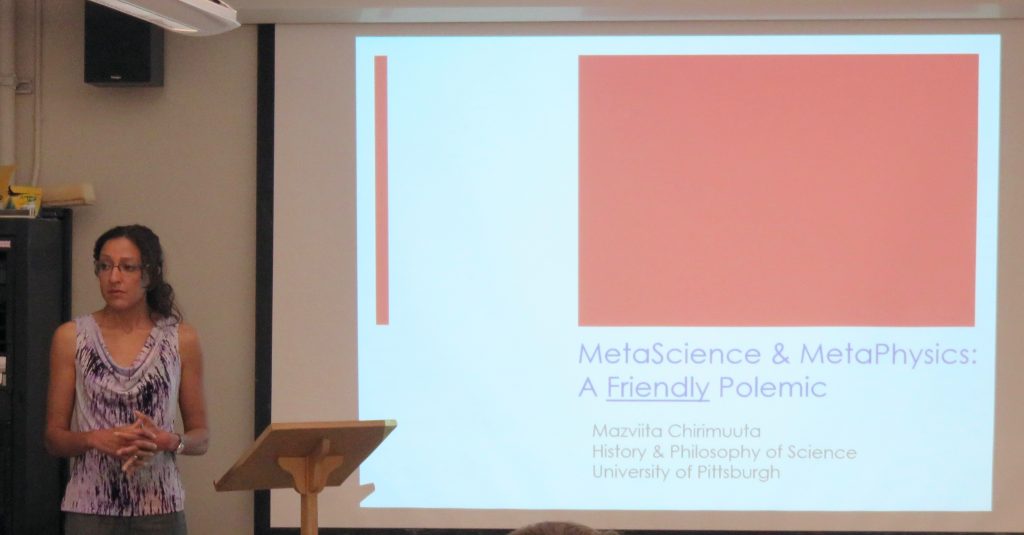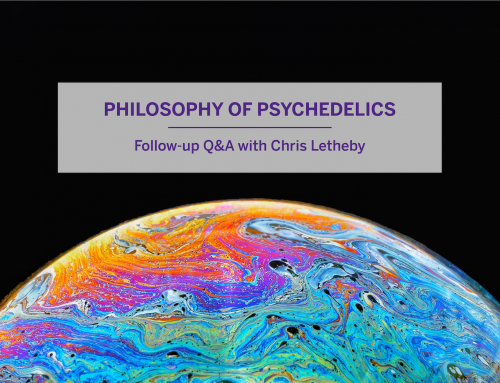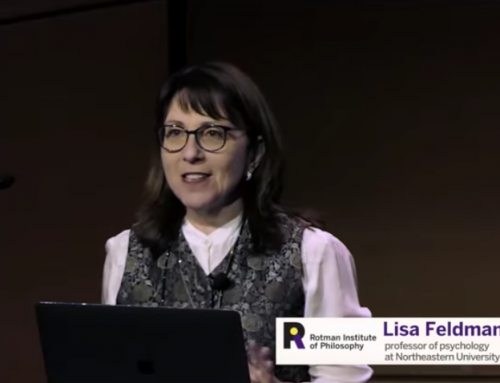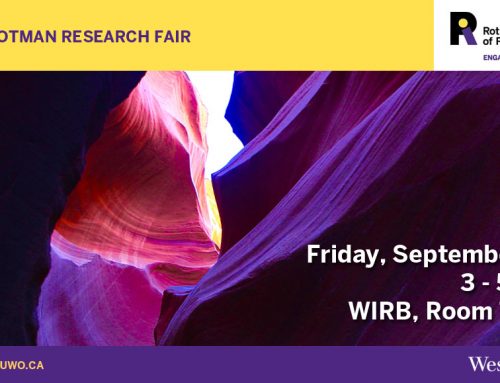Dr. Mazviita Chirimuuta is an Assistant Professor in the History and Philosophy of Science at the University of Pittsburgh. Her work examines the relationship between neuroscience and the philosophy of mind and perception. In recent years, her main project has been developing a theory of color that acknowledges the complexities of visual function revealed by recent perceptual science. This work appears in her 2015 book Outside Color, published by MIT Press.
In May, Dr. Chirimuuta was a keynote speaker at PhilMiLCog — Western’s 14th annual graduate conference in Philosophy of Mind, Language, and Cognitive science. During her time here, she sat down for an interview with John Roman, a M.A. student at McMaster University. John was one of the graduate speakers at the conference, delivering a talk titled What is Synaesthetic Color?. He conducted the following interview, and has generously contributed it to our blog.

John Roman: Your recent book, Outside Color, addresses philosophical questions of color. What kinds of questions is the philosopher of color interested in?
Mazviita Chirimuuta: Traditionally, there’s been this ontological question about the fundamental nature of color. That’s been of particular interest to philosophers as opposed to other questions about, say, the fundamental nature of shape or mass because those kinds of properties, it’s assumed, have an easy account to be given by the physical sciences, whereas colors, odors, sounds—the secondary properties—have been considered to be not so easily integrated into our basic physicalist ontology. Hence, there are puzzles about that. Color is often compared to value properties for this parallel reason: we don’t know how they fit into our physicalist ontology that most of us assume to be our basic metaphysical picture. So, that was my starting point on this project.
There are other epistemological issues that can motivate philosophers working on color perception. If we don’t know what kind of property color is and whether ordinary objects instantiate them, then there’s this epistemological puzzle about what our perceptual access to ordinary objects is, and whether it is in some sense illusory.
JR: You trace two basic lines of thinking about color in the history of the philosophy: Realism and Anti-Realism. What are these two views? And what do they mean by real?
MC: In this context, by “real” we mean instantiated in the mind-independent world. You could mean realism to mean instantiated anywhere. But in this context, realist theories of color want color to be out there in the mind-independent world, typically. For the purposes of the book I associate anti-realism with a kind of mentalism or eliminativism, which is either to say that colors are instantiated just in our heads or not instantiated at all in our universe.
JR: You write that “colors should not be thought of as something belonging either to observers or to objects. I propose to instead concentrate on color vision as a process, and to define colors as properties of an interaction between observers and things” (Chirimuuta 2015, 17). Why should we think of colors in this way?
MC: The third view that I contrast with realism and with anti-realism is a relational one, which is to say that colors are perceiver-dependent properties. Typically, that’s been cashed-out as a kind of dispositionalism, which is itself a kind of realist view. So there you can see how the taxonomy becomes slightly disjointed once we talk about relational views. But the basic intuition is that color properties can only be understood if we consider the specific ways that perceiving animals interact with their environment. So, you can’t give an account of what colors are if you only focus on the perceiver-side of that relationship or the distal, environmental side of that relationship.
I go the whole way and say colors are properties of these interactions. I was attracted to the view in large part because it’s not a view that people had been proposing recently. There are some process views of color from people like [Wilfrid] Sellars and [James] McGilvray, but they hadn’t developed it in this ecological relationist way. Someone like Evan Thompson, back in the 90s, was saying things in this ballpark but didn’t really connect it with the process ontology.
I thought when I was writing the book that it was a useful thing to do to pick up on the insights of ecological psychology and the kinds of things Evan Thompson was saying and try to connect that with some specific views in ontology.
JR: You call your view “color adverbialism.” What is adverbialism?
MC: Adverbs are words that we use to mark out properties of processes. So, when you’re running, you say you’re running quickly. Running is a process, an activity, and we describe them using adverbs. I transferred that to thinking about color. Colors are properties of these interactions, and we see the world in colorful ways. So, you can say “I see the strawberry red-ly” instead of saying that “The strawberry has, by itself, the property of redness.”
JR: So, whereas the realist or anti-realist might say “I see a red ball,” the adverbialist would say “I see the ball red-ly.” It’s a bit of an odd construction. What are some of the advantages to adopting the adverbialist view?
MC: One thing I don’t see as part of my project is giving an account of concepts of color that are presupposed in ordinary language. For various reasons — and I spell that out more in the talk today — I think that the project of giving a naturalist account of color will ultimately have to come apart from giving a philosophical analysis of our everyday concepts. So, by proposing this adverbial color ontology, I’m not saying that people should change the way that they talk, but I think that thinking about color in this way makes better sense of how these mind-dependent properties can be integrated into our basic physicalist worldview or naturalistic worldview.
JR: If colors are properties of interactions — adverbs of events — how do we know when we are perceiving correctly? According Realism and Anti-Realism, the answer seems clear: if objects bear the relevant property, then they are colored. If not, they are not colored.
MC: I connect the account of color ontology with ideas about the function of color vision, which I was drawn to by my reading of the scientific literature, [specifically] recent work on psychophysics, psychology, and also the neuroscience of color across different animal species. In a nutshell, the message is that animals have color vision because it helps them recover more information about their environment than they would if their visual system wasn’t sensitive to differences in wavelengths. So, the idea is that having color vision doesn’t help you detect the colors, it helps you see things better. If we take this view on board, then we say we make a mistake in our color perceptions if the states we end up with interfere with our abilities to see our environment. For example: to resolve background from foreground objects, to see the distances of things, or to re-identify an item.
JR: In your book you contrast two approaches to color science research: coloring-in and coloring-for. What’s the difference between these two approaches, and what are some of their philosophical implications?
MC: I say that the standard versions of realism and anti-realism haven’t thought much about the functional implications of color vision. So, they’ve talked as if you could work out the basic ontology of color without considering what color visual systems do. And so they’ve been running with this default view which is that color vision is separate and not integrated with the other parts of visual perception, such as shape perception, distance perception, and motion perception. So, that’s the coloring-in view. It’s as if there’s the shape-part of your visual system, which works out the boundaries of everything, and then there’s the color-part of your visual system, which comes along, works out the colors and then fills that in like in a coloring book.
And I argue that recent science of color gives us reason for endorsing an alternative — the coloring-for view — which is to think about color vision as for the perception of shape, for the re-identification of objects, etc. It was also the work of Kathleen Akins that motivated me to think about this view because that’s something that she’s been saying for a while in particular: having color vision is a way of enhancing the amount of contrast that someone can perceive in a visual scene.
By itself, this contrast between coloring-in and coloring-for doesn’t resolve the ontological issues, but I think it gives us reason to reframe the debate in such a way as something like the adverbial view becomes more plausible. In particular, because it allows us to account for errors and misperceptions in a way that we couldn’t do without seeing how color vision is integrated with the rest of visual perception.
So, that’s one thing that people have been talking about in response to the book. A couple of people had thought originally that I see the coloring-for view as, if you like, the inductive base for color adverbialism. I don’t think the relationship is anything like that type, but there is a small constellation of ideas that fit well together if we start with that different empirical perspective.
JR: How do you understand the relationship between contemporary philosophy and science, specifically that of the philosophy of color and color science? How can the philosophy of color inform color science, or what are some of the ways in which they can interact?
MC: I’ve found it a fruitful interaction in this particular project. In my own research, I started out in vision science, but I didn’t focus in particular on color vision. It was really when I started working on the philosophy of color vision that I met and talked more with scientists who worked specifically on color. It was going to visit Fred Kingdom’s lab in McGill and reading his papers on the integration and uses of color vision that actually got me thinking along these lines. I wrote some of my views, and he found it interesting to see the implications laid out in this philosophical way. And also Anya Hulbert, another vision scientist at Newcastle, is someone I’ve had fruitful interactions with.
So, certainly, I’ve benefitted very much in my own experience from hearing the scientific expert opinion on these things. Whether my view actually leads to different experimental questions and different avenues of research that could be profitable for scientists, I don’t know. I’d have to ask them (laughs).
One thing that I’ll say as a philosopher of mind — and this is another part of the talk later on — is that I think a lot of the metaphysical issues about mind are traditionally thought of as arising somehow independently of science and that maybe science can add evidence one way or another, as if they occur in this timeless, metaphysical way. And that’s something I don’t think is correct. I think the reason why color is perceived as philosophically problematic or interesting is for reasons about the development of our scientific culture. And so, as philosophers, we need to be aware of that. I call that approach “meta-scientific” as opposed meta-physical.
JR: In your presentation at the PhilMiLCog, you describe some of your work on color as ‘meta-science’ and yourself as a ‘meta-scientist’. So what exactly do the words ‘meta-science’ and ‘meta-scientist’ mean?
MC: The main difference with metaphysics is, as people see their research now is, I think, is when you’re doing a metaphysical project, you’re expected to argue for a result that is modally strong. So, the fundamental nature of color is this, and this is what it would be across possible worlds. It’s not always made explicit, but you do see this coming up sometimes. Edouard Machery, my colleague in the [History and Science of Philosophy] at Pittsburgh, has a book coming out soon where he talks about these modally immodest claims that philosophers go in for these days and questioning whether we really have the tools that could at any point in the future settle the question of whether mind-body dualism is true or whether physicalism is true across all possible worlds. I share his skepticism that these aren’t really attainable goals, but there are interesting philosophical issues in the vicinity of that. Seeing these puzzles about the mind-body relationship or about the fundamental nature of perceptible objects as springing from science, we need to look at the conceptual foundations of science to see why [these issues] are puzzling, and how we could frame our basic concepts in such a way that [they are] not so puzzling. I think that’s still really philosophically challenging and interesting, but I can’t say that I’ve told you the fundamental nature of color across possible worlds.
I also think that we need to embrace a lot more pluralism about where we end up in our philosophical positions. I started off the color project thinking that there would be one answer to the question “what is color?” that should hold at least across different sciences. And the more I worked on, I thought, well, this could be a good answer to the question “what is color?” for the purposes of thinking about perceptual psychology, but it’s not clear to me that it’s a good account if you’re motivated by physical science issues and certainly not ordinary language issues. So, I think another part of the meta-science approach is that you have to be humble about the limits of your views, even when we’re talking about this world we happen to live in.
Pictured above: Bumblebee on Muscari (photo credit)






